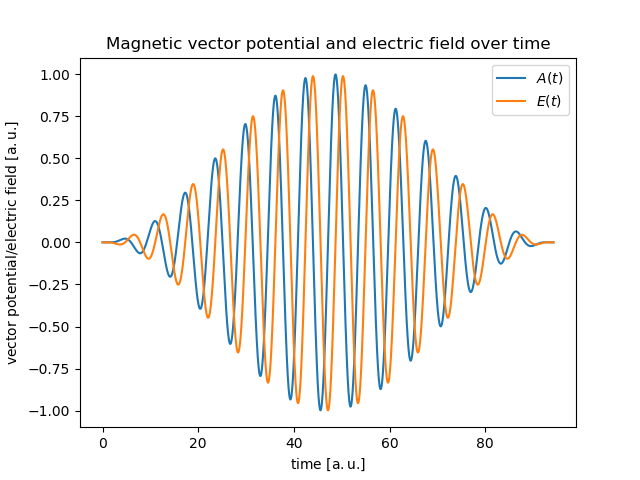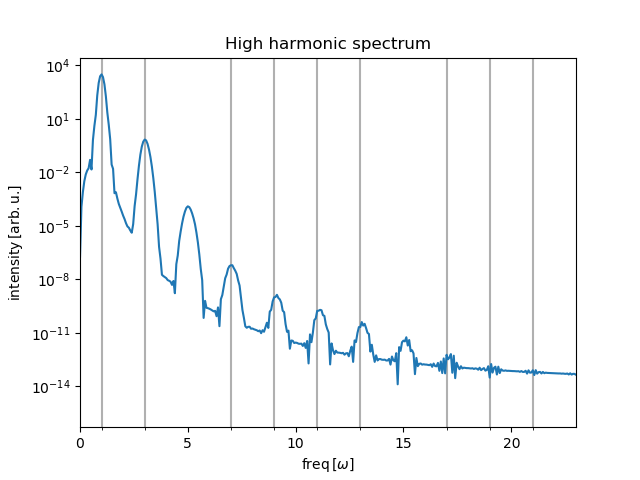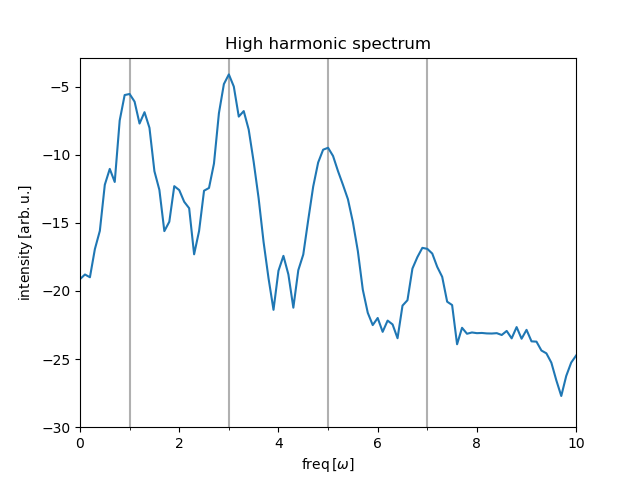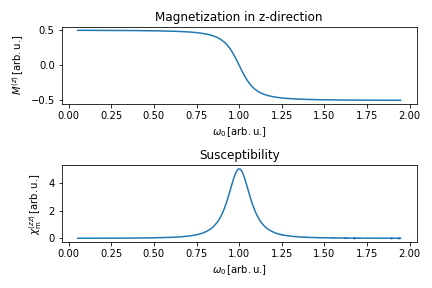Jupyter notebooks for the lecture using numerical concepts for propagtion of physical systems in time and calculation of eigenenergiesm and other expectation values.
All notebooks are tested under the following package-versions:
| Package | Version |
|---|---|
| python | 3.9 |
| numpy | 1.22.2 |
| scipy | 1.7.3 |
| matplotlib | 3.3.4 |
| ipython | 7.30.1 |
| ipympl | 0.2.1 |
Propagation of atomic wavefunctions using the Multiphoton-Matrix-Iterative-Method on non-uniform grids. We use atomic units. The Hamiltonian reads
$$ \hat{H}0\Psi{\ell}(r, t)Y_{\ell,m}(\theta,\varphi) = \left(-\frac{1}{2 r^2}\frac{\partial}{\partial r}\left(r^2 \frac{\partial}{\partial r} \Psi_{\ell}(r, t) \right) + \frac{\ell(\ell+1)}{2r^2}\Psi_{\ell}(r, t) - \frac{1}{r}\Psi_{\ell}(r, t)\right) Y_{\ell,m}(\theta,\varphi).$$
Artificial one-dimensional atom of the form
Generic two-level system subjected to an external classical field is described via the Hamiltonian
Calculations of various expectation values like magnetization and susceptibility
Two 1D tight-binding models with different number of orbitals and a model for the description of graphene as discussed in the lecture. Calculation of the band structure for the corresponding Hamiltonians and plotting of the lattices in real and reciprocal space.



